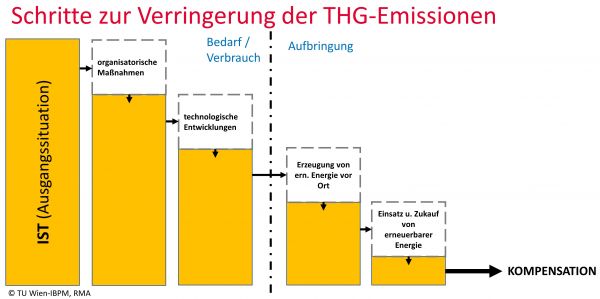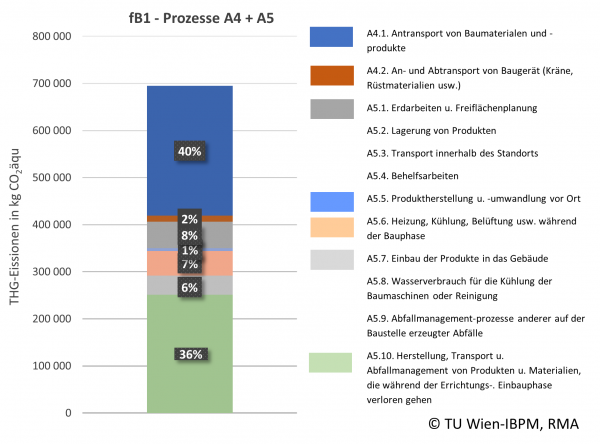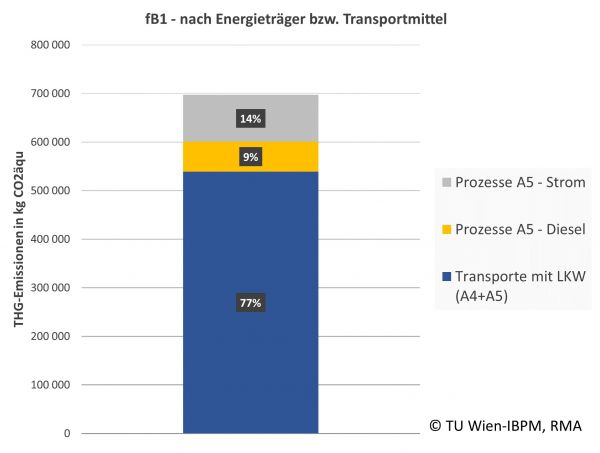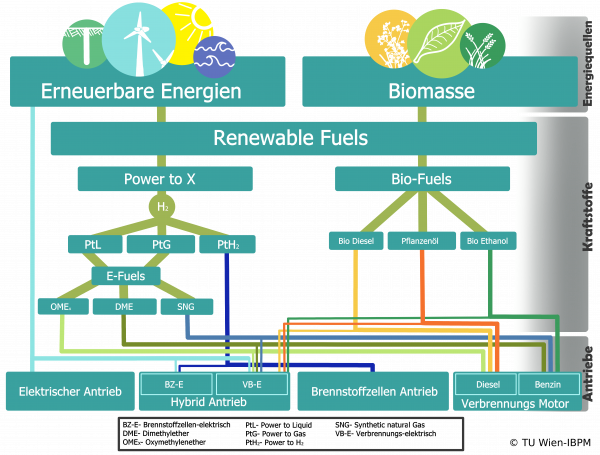CO2 neuBau - The CO2-neutral Construction Site: a Contribution to the Climate Protection by the Austrian Construction Industry
Short Description
Status
completed
Motivation and research question
The R&D project "CO2-neutrale Baustelle", funded by the FFG as part of the research program "City of tomorrow" in the 7th call for proposals of The Federal Ministry for Climate Action (BMK), of the research department Construction Process and Methods at the TU Wien and the Resource Management Agency (RMA) identified the opportunities and obstacles of climate-neutral construction sites.
Initial situation/status quo
Nowadays reducing greenhouse gases is a global joint effort. In this regard the European Union as well as Austria are pursuing an ambitious goal: reaching so-called climate-neutrality until 2050 (EU) and 2040 (Austria) respectively. In previous years the building sector could reach substantial reduction in greenhouse gases. Nevertheless, there still exists need and potential for additional reductions. Therefore, the carbon neutral construction site represents a crucial puzzle stone within the object lifecycle that has not been sufficiently considered in the past.
Project contents and objectives
The aim of this project was to develop a methodology for identifying the greenhouse gas emissions generated on construction sites based on existing standards. In a further step, possibilities for reducing these emissions were to be identified and their potential evaluated qualitatively and - where possible - quantitatively. In the presented report, the focus was on the reduction of greenhouse gases. Other environmental and health aspects or rebound effects are outside the research scope of the present study.
Methodical procedure
The research questions posed were answered by means of a national and international literature review, interviews with experts from the construction industry, an online survey, and a workshop. These methods were implemented to ensure high research quality and applicability in the Austrian construction industry.
Currently, there are no standardized regulations to identify all direct and indirect CO2 emissions on a construction site and to identify necessary framework conditions as well as technologies for their substitution, compensation, or adaptation. Therefore, at the beginning, the respective current state of GHG emissions was determined for four fictitious urban construction sites based on defined system boundaries. The systems for construction, renovation, and demolition include processes on the construction site as well as transport processes to and from the construction site. The construction sites are a new residential building, an energy efficient renovation of a residential building, urban infrastructure asphalting works, and a demolition of an office building. For the four construction sites, data from real, already completed construction sites were used and supplemented by data from the literature or assessments by experts. Based on this defined current state of GHG emissions, the authors created scenarios for reducing GHG emissions until a CO2-neutral construction site is achieved. The scenarios were calculated to show potential short-term reductions in 2023, and long-term reductions by 2050.
Results and conclusions
In this project, achieving a CO2-neutral construction site is divided into five steps, with four steps contributing to the reduction of GHG emissions on site. The steps to reduce CO2 emissions are organizational measures, technological developments, generation of renewable energy on the construction site, and the purchase of renewable energy. As a fifth step, remaining CO2 emissions must be financially compensated.
The GHG emissions for the four fictitious construction sites show that the major energy sources for construction site activities are diesel and electricity. A major contributor to GHG emissions from construction activities is the transportation of materials to and from the site by truck. The proportions vary by construction site type.
The calculated scenarios for 2023 show that measures are already available to implement CO2 savings in the short term. The reduction potential for greenhouse gas emissions at construction sites for 2023 range from 21% to 52%, depending on the type of construction site and general conditions.
The greatest savings potential is in the reduction of transport distances, alternative fuels/motors, and the purchase of electricity from renewable sources. Specific measures cannot be prescribed in a blanket manner due to the individual construction site but must always be tailored.
In parallel, cost/benefit advantages of a CO2-neutral construction site were demonstrated by the authors and quantified by means of an investment cost estimate. Depending on time of use, some small electric-powered excavators are currently less expensive than diesel-powered equipment. In the future, there could be an economic benefit over the life cycle of large electric construction equipment.
The main barriers to achieving a CO2-neutral construction site are the costs incurred and the lack of successfully implemented pilot projects that test practical alternatives. The conducted survey showed that the construction industry sees subsidies, awareness raising, and changes in laws and regulations as opportunities for the successful implementation of CO2-neutral construction sites. Design and construction companies must advance their understanding and use of digital technologies for optimizing construction projects so that BIM, cycle planning, and LEAN management methods can lead to CO2 emission savings in practice.
Outlook
For the future, the authors recommend the development of standardized data collection for the simplified calculation of GHG emissions, which will make it easier for construction stakeholders to efficiently record GHG emissions and to plan and implement measures to reduce or shift them. The fictitious construction sites must be converted to real CO2-neutral construction sites as funded pilot projects. As many different organizational and variable technical measures should be tested in field research. It is recommended to include mandatory reduction measures, further eco-indicators as well as aspects of ecology – such as resource efficiency and circular economy – in the implementation of a CO2-neutral construction site.
Project Images
Terms of use: The pictures listed underneath the header “Project Pictures” originate from the projects in the frame of the programmes City of Tomorrow, Building of Tomorrow and the IEA Research Cooperation. They may be used credited for non-commercial purposes under the Creative Commons License Attribution-NonCommercial (CC BY-NC).
Project Partners
Project management
Resource Management Agency (RMA)
Project or cooperation partners
Vienna University of Technology - Institute of Interdisciplinary Construction Process Management, Construction Process and Methods
Contact Address
Ressourcen Management Agentur (RMA)
Mag. Johann Daxbeck
Kölblgasse 17/30
A-1030 Wien
Tel.: +43 (1) 913 22 520
E-mail: office@rma.at
Web: www.rma.at





